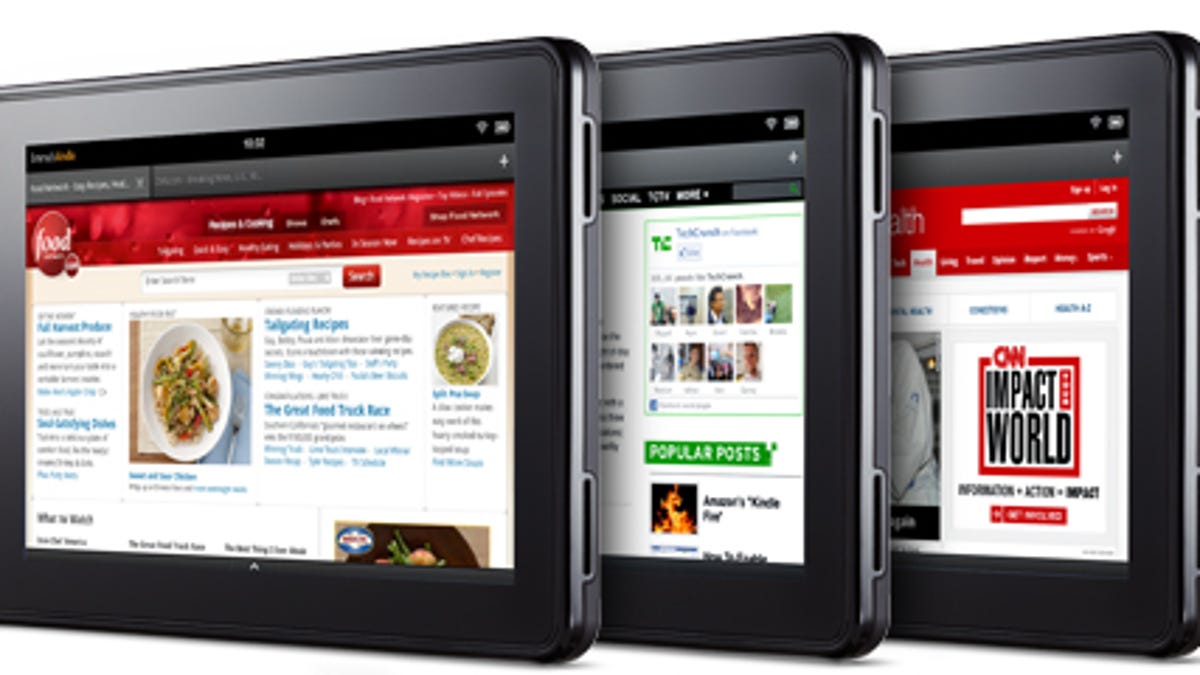Amazon Silk: Weaving a new browser
One of the key features in Amazon's new tablet is a Web browser called Silk. Amazon says the exclusive software can render pages faster than competitors, and save battery life in the process.
Among Amazon's announcements today is that the retail and cloud services giant is stepping into the browser market with a new Web browser that ships in its upcoming Android-based tablet.
That new browser is called Silk, and it's the latest effort to make Web browsing faster, especially on portable devices where the hardware is typically slower than what a user might have on a desktop or notebook computer. It can also learn how you browse the Web, and extend battery life by putting some of the heavy lifting in the cloud, Amazon says.
The company is putting the weight of its massive cloud services infrastructure behind the browser to make up for potential hardware shortcomings. While the Kindle Fire tablet ships with a dual-core processor that's capable of running games and other applications, the company says that users have come to expect a certain amount of speed on the desktop that isn't always there on mobile devices.
Amazon's solution is what it calls a "split browser," a method that makes use of local processing for some things, while tapping into its Elastic Compute Cloud to process and serve up content faster than users might get it directly from the device.
That approach is similar to that of Olso, Norway-based Opera, which in 2005 debuted its Opera Mini browser. Like Amazon, that too offered heavy lifting for some pages on the company's servers, while promising to cut down on mobile data spending by shrinking large pages.
Amazon says its process for determining what the local hardware does versus its own servers is entirely automatic, and done behind the scenes, so users don't have to manage any special settings or even know what the software is doing. The technology also takes into account things like how good your connectivity is, and how pages are coded to figure out how to put the device's processor to work versus its own, something the company says can result in better battery life.
Adding to that, Amazon says the software is actually able to learn user habits using the same technology it employs on its retail site, then grabbing pages it thinks people might visit before they're clicked.
"As Silk serves up millions of page views every day, it learns more about the individual sites it renders and where users go next," Amazon's Silk page reads. "By observing the aggregate traffic patterns on various web sites, it refines its heuristics, allowing for accurate predictions of the next page request."
That's an interesting parallel to efforts by Google. In June of this year, the search giant took the wraps off of Instant Pages, a feature that served up prerendered versions of Web pages from its search results. The feature went live in Google's Chrome browser just last month, and like Amazon's effort, brings the promise of faster browsing, based in part, on user habits.
One big thing to note is that the software will only be available on the Fire, the company's $199 tablet that arrives in November. It's unclear whether it will seep into other platforms after that. Amazon has a habit of extending its software to other platforms, yet Silk represents one of the big differentiators from competitors, and something the company can position as a reason to buy its device over another.
Below is Amazon's pitch for Silk, shown at today's event:


